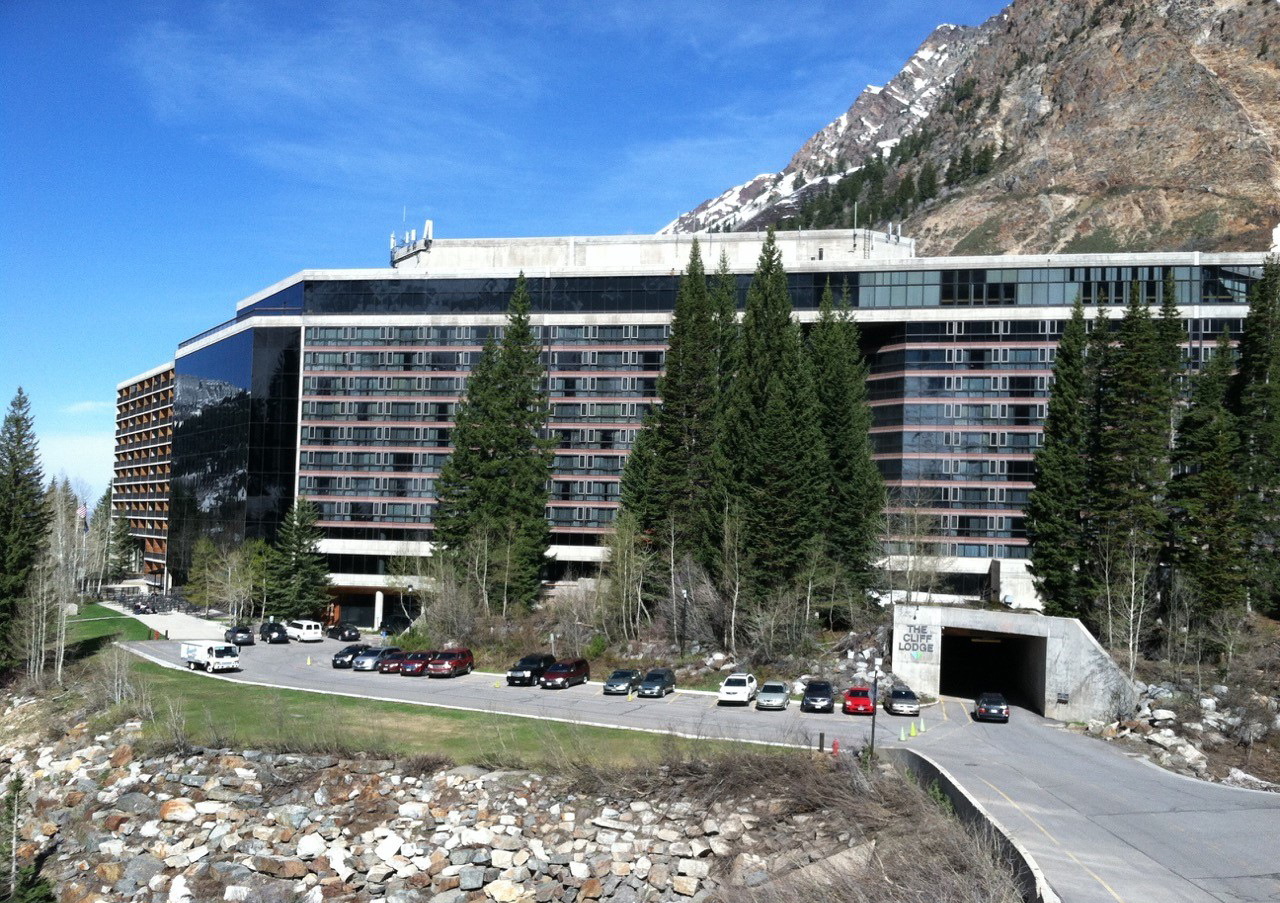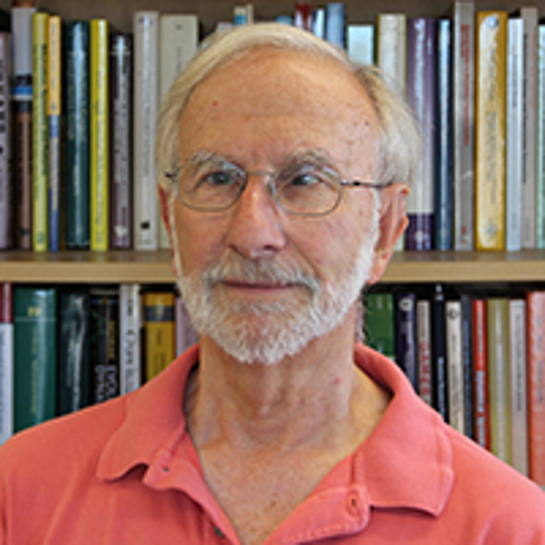Nearly Three Decades at Snowbird: The Iconic Venue and its Influence on Dynamical Systems at SIAM
After 14 biennial meetings at the Snowbird Ski and Summer Resort just outside of Salt Lake City, Utah, the SIAM Activity Group on Dynamical Systems (SIAG/DS) decided to move its 2021 conference to Portland, Ore. In this article, we reflect on the symbiosis of Snowbird and dynamical systems, and highlight changes that have occurred since the first Snowbird meeting in 1992. Our choice of the term “symbiosis” is deliberate; we believe that the venue—located (almost) at the end of Little Cottonwood Canyon in the Wasatch Range of the Rocky Mountains—has played an important role in the development of an interdisciplinary research community focused on one of the most vibrant areas of applied mathematics.
Why Is Snowbird Different?
SIAG/DS’s use of the same venue for more than a dozen consecutive meetings is unique among the SIAGs. All other groups move their meetings among different cities in the U.S.; some even go international. Why is Snowbird different?
A standard caricature of a Snowbird conference goes like this: if you want to meet a particular applied dynamicist attending Snowbird, hang out at the SIAM registration desk for 10 minutes. The layout of the meeting rooms on two floors creates a traffic pattern with two critical points where most trajectories intersect; one of those points is also the location of the SIAM desk. Even though the meeting is among the highest attended SIAM conferences, the setup makes it possible to meet people more easily than at most other meetings. Another positive feature of the Snowbird venue is the large number of nooks and crannies where attendees can connect for private scientific discussions. Most conference hotels do not offer this amenity.

Yes, Snowbird is isolated; it is a 45-minute drive from Salt Lake City up the canyon to Cliff Lodge, where the sessions are held. But the scenery is gorgeous, with a breathtaking view of the surrounding mountains from almost anywhere on site. There are essentially no distractions. The meeting focuses on science, and the science is thoroughly interdisciplinary. Other positives include the possibility of skiing (some years) and the ample free time for mingling and networking in the evenings due to the secluded nature of the venue.
Of course, there are negatives. When the number of attendees exceeded the lodge’s capacity, late registrants were accommodated at the Alta Ski Area towards the end of the canyon. The alternative was to stay down in the valley, which adds a daily hour-and-a-half commute to and from the conference. Limiting the number of participants would counter SIAM’s generally accepted spirit of openness.
Some attendees complained about the lack of evening entertainment at the lodge. At the 2003 SIAM Conference on Applications of Dynamical Systems (DS03), this grievance inspired conference organizers to set up a collection of board games. It is worth noting that we see the dearth of evening activities as both a positive (attendees are readily available) and a negative (it’s difficult to separate oneself from them). Other negatives include the altitude (approximately 8,000 feet)—which poses problems for some, especially when combined with jet lag—and the price of food at Snowbird’s eateries.
SIAM’s established relationship with Snowbird offers further perks. The lodge provides good room rates and many services to its regular customers. The total expense of attending DS21 in Portland will likely not be any cheaper than the cost of attending a Snowbird meeting. The management at Cliff Lodge is familiar with SIAM’s requirements, and over the years they have accommodated special requests like the grab-and-go lunch table during midday breaks and the provision of additional meeting rooms.
Some Statistics
In May 1990, SIAG/DS held its inaugural meeting in Orlando, Fla., with 427 registered participants. All subsequent meetings took place at Snowbird.
Aside from DS92—the first Snowbird meeting, which took place in October 1992—all SIAG/DS meetings occurred every other May from 1995 until 2019. A list of all meetings, with their co-chairs, is available in Table 1. An additional SIAG/DS-sponsored Pacific Rim Dynamical Systems Conference was held in Maui, Hawaii in August 2000.

The number of registered attendees grew from 390 at DS92 to 1,009 at DS19; the increase was not monotone but certainly substantial (see Figure 1). Beginning with DS13, the number of participants exceeded the guest room capacity of the lodge and late registrants were accommodated elsewhere. The number of meeting rooms at Cliff Lodge also limited the number of minisymposia that the program could feasibly support.
Scientific Programs

The scientific program of a Snowbird meeting typically consisted of invited presentations, minisymposia, contributed papers, and poster sessions. Beginning in 2001, SIAM also awarded the Jürgen Moser Lecture at Snowbird. To accommodate the increasing number of presentations, the length of the meetings grew to five full days with two evening poster sessions.
Table 2 documents the breakdown of presentations over the years. The number of invited presentations decreased to make room for more minisymposia, the number of minisymposia exploded at DS17, and the number of contributed paper sessions diminished in recent years in favor of poster presentations. Parallel sessions were the norm; parallelism increased over the years but was limited by the number of conference rooms at the lodge. Organizing committees had to either allow early and/or late sessions or shorten the length of individual presentations; each committee struggled with this issue and found its own solution. Lodge management helped by enclosing an open area and creating two supplementary breakout rooms.

Conference themes were selected by each organizing committee and varied over the years. It is difficult to verify how strictly the themes were actually followed; they were reflected in the list of invited speakers but functioned more as suggestions for minisymposia organizers and authors of contributed papers. At DS97, the organizing committee made a good-faith effort to classify all minisymposia and contributed paper presentations under six principal themes and ten application areas.
Beginning with DS13 and continuing through DS17, the themes were simply summarized in two sentences: “The scope of this conference encompasses theoretical, computational, and experimental research on dynamical systems. Highlighted areas include the dynamics of biological, chemical, physical, social, and financial systems, along with applications in geophysics, fluid dynamics, engineering, and other applied sciences.” DS13 recognized 2013’s designation as the year of Mathematics of Planet Earth (MPE), and several presentations addressed MPE-related research topics.
Adaptability has been a striking aspect of Snowbird meetings. In 1995, hot topics included chaos, normal forms, pattern formation, infinite dimensional dynamics, fluid dynamics, and engineering applications. Over two decades later, the 2019 meeting featured more talks on dynamics of networks and applications to biology. This adaptability is due, in part, to the decision to appoint (mostly) junior to mid-career researchers as SIAG/DS program directors, and have both candidates for program director agree to co-chair the Snowbird conference.
Prizes and Awards
Every two years beginning in 2001, SIAG/DS has awarded two special prizes: the Jürgen Moser Lecture and the J.D. Crawford Prize. As mentioned before, SIAM established the Jürgen Moser Lecture in memory of Jürgen Moser, a leading mathematician who helped develop mathematical theories in celestial mechanics and dynamical systems theory. This prestigious prize is given to a person who has made distinguished contributions to nonlinear science. The awardee delivers a plenary lecture at the biennial SIAG/DS conference.
The J.D. Crawford Prize was created in honor of John David Crawford, a co-organizer of DS95, for his contributions to the physics of collisionless plasmas and pattern formation. The prize recognizes one individual for his/her recent outstanding work on a topic in nonlinear science. Table 3 lists recipients of both prizes.

In addition, SIAG/DS presents the Red Sock Award for the best poster presentations by students or postdoctoral researchers at Snowbird. Four awards of equal merit are made at the end of each meeting. The prize honors James A. Yorke, and each winner receives a pair of red socks.
Outlook
It takes a while to get to know the positives and negatives of any place, so we’ll keep our fingers crossed for DS21. We hope that the new Portland venue will provide some of the intimacy and attendee accessibility that Snowbird has delivered for the past 27 years. Those of us who have attended multiple Snowbird meetings will remain grateful for having had that opportunity.
About the Authors
Hans Kaper
Affiliate Faculty, Georgetown University
Hans Kaper, founding chair of the SIAM Activity Group on Mathematics of Planet Earth and editor-in-chief of SIAM News, is affiliate faculty in the Department of Mathematics and Statistics at Georgetown University.
Marty Golubitsky
Professor, Ohio State University
Marty Golubitsky is a distinguished professor of mathematics at the Ohio State University. He is the founding editor-in-chief of the SIAM Journal on Applied Dynamical Systems and a past president of SIAM.

Stay Up-to-Date with Email Alerts
Sign up for our monthly newsletter and emails about other topics of your choosing.



